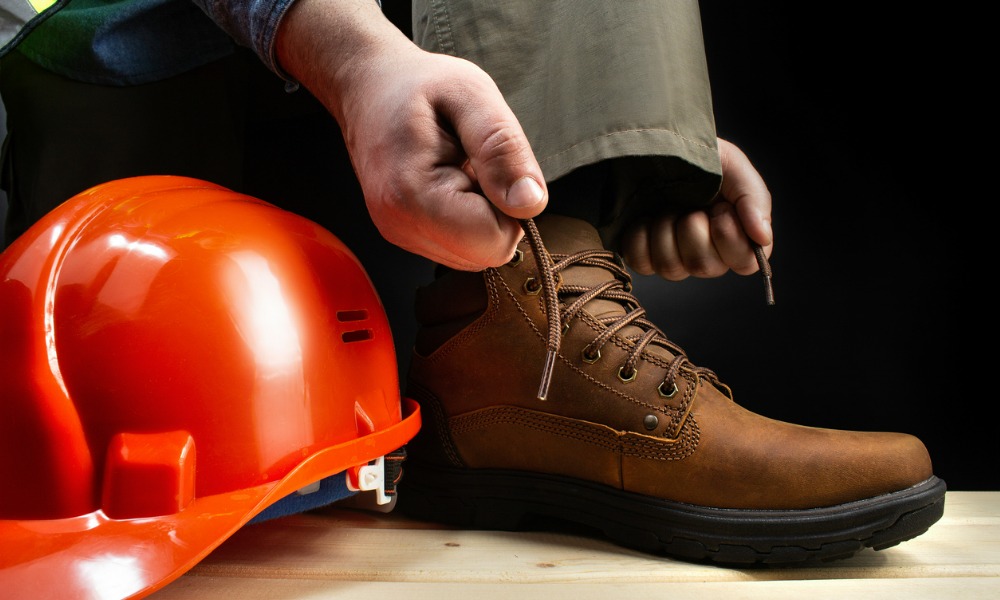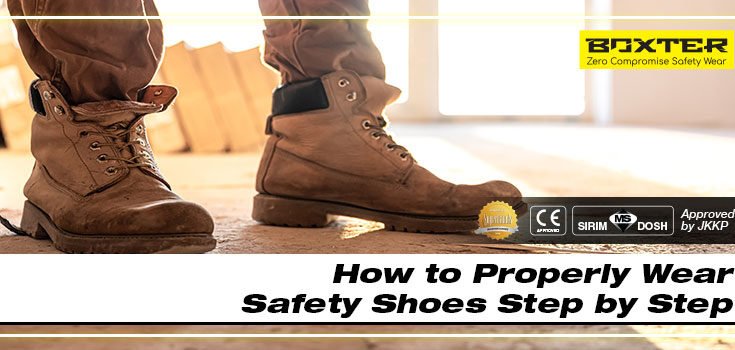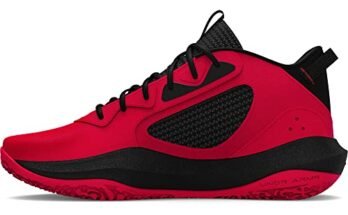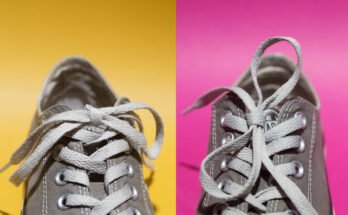To wear safety shoes properly, ensure a snug fit, lace them up securely, and inspect for any damage. It is crucial to wear safety shoes properly to ensure maximum protection against workplace hazards.
Failing to do so may result in accidents and injuries. Safety shoes should fit comfortably and provide ample support for your feet. When wearing safety shoes, make sure to lace them up tightly to provide stability and protection. Regularly inspect your safety shoes for any signs of wear and tear, and replace them if necessary.
By following these guidelines, you can ensure that your safety shoes provide the best possible protection in the workplace.

Credit: safeft.com
Why Wearing Safety Shoes Properly Is Important
Protection From Workplace Hazards
Wearing safety shoes properly shields your feet from various workplace dangers like falling objects.
Prevention Of Foot Injuries
Properly worn safety shoes help prevent common foot injuries such as cuts and punctures.

Credit: boxterfootwear.com.my
Choosing The Right Safety Shoes
When it comes to workplace safety, choosing the right safety shoes is paramount. Wearing safety shoes properly not only protects your feet from potential hazards but also ensures that you are compliant with safety regulations. Understanding the specific hazards in your workplace and selecting the appropriate safety shoes is crucial for your well-being. In this section, we will discuss how to identify workplace hazards and select the right safety shoes to enhance workplace safety.
Identifying Workplace Hazards
Before choosing safety shoes, it’s essential to identify the potential hazards present in your workplace. These hazards may include heavy objects that can cause impact injuries, sharp materials that can puncture the feet, or slippery surfaces that can lead to falls. By recognizing these risks, you can determine the specific features and protective elements your safety shoes should have.
Selecting The Appropriate Safety Shoes
When selecting the appropriate safety shoes, consider the specific hazards you identified in your workplace. Look for shoes with protective toe caps to guard against impact injuries, puncture-resistant soles to prevent sharp objects from penetrating the footwear, and slip-resistant outsoles for enhanced traction on slippery surfaces. Additionally, ensure that the shoes provide ample ankle support and are comfortable for prolonged wear to promote foot health and reduce fatigue.
Proper Fit Of Safety Shoes
Proper fit is crucial when it comes to safety shoes. Wearing ill-fitting safety shoes can lead to discomfort, foot pain, and even injuries. It’s important to ensure that your safety shoes fit properly to provide the necessary protection and comfort for your feet.
Importance Of Proper Fit
Properly fitting safety shoes are essential for ensuring comfort and preventing foot injuries. Shoes that are too tight can cause blisters, calluses, and discomfort, while shoes that are too loose can lead to tripping hazards and reduced protection. Therefore, achieving the right fit is vital for maintaining foot health and safety.
Measuring Your Feet
Before purchasing safety shoes, it’s essential to measure your feet to determine the correct size. Use a foot measuring device or a piece of paper and a ruler to measure the length and width of each foot. Take the measurements at the end of the day when your feet are at their largest to ensure an accurate fit.
Trying On Shoes
When trying on safety shoes, it’s important to ensure that they fit properly. Here are some tips to keep in mind:
- Wear the type of socks that you will typically wear with the shoes.
- Check the length and width of the shoes by standing and walking in them.
- Ensure that there is ample toe room and that the shoes do not feel too tight or too loose.
- Walk on different surfaces to assess comfort and support.
By following these tips, you can ensure that your safety shoes fit correctly, providing the protection and comfort your feet need in hazardous work environments.
How To Wear Safety Shoes Correctly
When it comes to workplace safety, wearing safety shoes correctly is crucial to protect your feet from potential hazards. Follow these steps to ensure you are wearing your safety shoes properly:
Wearing Socks
- Choose moisture-wicking socks to keep your feet dry and comfortable.
- Ensure the socks are not too thick, as this may affect the fit of the shoes.
- Inspect socks for any holes or wear and replace them as needed.
Lacing Up Shoes
- Start by loosening the laces and sliding your foot into the shoe.
- Begin lacing from the bottom, ensuring the fit is snug but not too tight.
- Double knot the laces to prevent them from coming undone during work.
Adjusting Straps And Buckles
Check that straps and buckles are securely fastened to provide maximum support and protection.
Make sure the shoes are not too loose or too tight to avoid discomfort or potential injuries.
Maintaining Safety Shoes
Properly wearing safety shoes is crucial for workplace safety. Ensure a snug fit and lace them securely to prevent tripping hazards. Always inspect for damage and replace worn-out shoes promptly to maintain protection. Regularly clean and store them in a dry area to prolong their lifespan.
Wearing safety shoes is crucial in protecting your feet from potential hazards in the workplace. However, it is equally important to maintain them properly to ensure they remain effective. Here are some tips on how to maintain your safety shoes.Cleaning And Inspection
Keeping your safety shoes clean is essential to extend their lifespan and maintain their effectiveness. It is recommended to clean them regularly with a damp cloth and mild soap. Make sure to dry them thoroughly before wearing them again. Inspect your safety shoes regularly for any signs of damage or wear and tear. Check the soles for any cracks or holes, and ensure that the laces and stitching are in good condition. If you notice any damage, have them repaired or replaced immediately.Replacing Worn Out Shoes
No matter how well you maintain your safety shoes, they will eventually wear out. It is recommended to replace them every six months to a year, depending on how frequently they are used and the conditions they are exposed to. When shopping for new safety shoes, make sure to choose ones that are appropriate for your work environment and provide the necessary protection. It is also important to ensure they fit properly and are comfortable to wear. In conclusion, maintaining safety shoes is just as important as wearing them. Regular cleaning and inspection can help extend their lifespan and ensure they remain effective in protecting your feet from potential hazards. Don’t forget to replace them when they start to wear out to ensure your safety is always a top priority.Training And Education On Safety Shoes
Proper training and education on wearing safety shoes are crucial to ensure workplace safety.
Training On Proper Use
- Step 1: Wear safety shoes that fit well to prevent slips and falls.
- Step 2: Lace up the shoes securely to provide ankle support.
- Step 3: Ensure the insoles are comfortable for long hours of wear.
Educating On Workplace Hazards
It is essential to educate workers on the potential hazards in the workplace:
- Identify: Recognize specific hazards that safety shoes can protect against.
- Inform: Educate employees on why wearing safety shoes is necessary.
- Train: Provide regular training sessions on the correct usage of safety shoes.

Credit: www.thesafetymag.com
Frequently Asked Questions
What Are The Rules For Safety Shoes?
Safety shoes must meet OSHA standards for your work environment. They should fit well, have slip-resistant soles, and provide toe protection. Regular inspections ensure they remain in good condition.
How Can I Stop My Feet Hurting In Safety Shoes?
Ensure proper fit, cushioned insoles, and adequate arch support in your safety shoes to alleviate foot pain. Break-in your shoes gradually and consider orthotic inserts for extra comfort. Keep feet dry and wear moisture-wicking socks to prevent discomfort.
What Are The Osha Requirements For Safety Toe Shoes?
OSHA requires safety toe shoes to have impact resistance of 75 foot-pounds and compression resistance of 2500 pounds. The footwear should meet ASTM F2413-18 standards and be labeled with a green triangle and “75” or “C75” for the toe cap.
Should Safety Shoes Be Tight Or Loose?
Safety shoes should fit snugly, not too tight or loose, to provide proper protection and comfort.
Conclusion
Properly wearing safety shoes is crucial for workplace safety and comfort. By following these guidelines, you can ensure maximum protection and support. Remember to choose the right fit and style that suits your needs. Prioritize safety without compromising on style or functionality.
Stay safe and step confidently!



